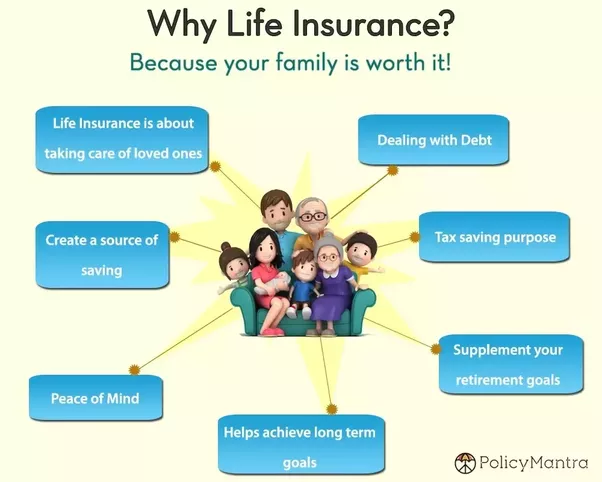5 Easy Facts About Pacific Prime Described
Table of ContentsGetting My Pacific Prime To WorkThe Single Strategy To Use For Pacific PrimeThe Pacific Prime IdeasGet This Report on Pacific Prime
In most states, the insurance company is called for to send you a copy of the adjustments to your policy. It is very important that you read Endorsements or Motorcyclists so you recognize exactly how your plan has changed and if the plan is still sufficient to satisfy your needs. To obtain a copy of your insurance coverage plan, please call your insurance coverage representative or firm.
The Institute of Medicine (IOM) Board on the Repercussions of Uninsurance launches an extended exam of proof that addresses the significance of health insurance protection with the magazine of this report. Protection Matters is the first in a series of 6 records that will be provided over the following 2 years recording the fact and repercussions of having an approximated 40 million individuals in the USA without medical insurance coverage.

Rumored Buzz on Pacific Prime
The objective of this series of research studies is to redouble policy attention on a longstanding problem. Complying with the longest financial growth in American history, in 1999, an approximated one out of every 6 Americans32 million grownups under the age of 65 and even more than 10 million childrenremains without insurance (Mills, 2000).

10 percent of the populace make up 70 percent of wellness treatment expenditures, a connection that has stayed constant over the past 3 years (Berk and Monheit, 2001) - international travel insurance. Therefore medical insurance proceeds to serve the function of spreading out danger also as it increasingly finances regular treatment. From the perspective of healthcare companies, insurance carried by their individuals helps protect an income stream, and neighborhoods benefit from monetarily sensible and steady healthcare professionals and institutions
Government provides health insurance policy to populaces whom the personal market might not offer effectively, such as disabled and senior citizens, and populations whose accessibility to health and wellness treatment is socially valued, such as kids and expecting women. The utmost ends of wellness insurance policy coverage for the private and neighborhoods, including work environment neighborhoods of workers and companies, are improved wellness end results and lifestyle.
Pacific Prime Fundamentals Explained
Staff members rate medical insurance initially news by much in significance amongst all the advantages provided in the workplace (Salisbury, 2001). There have been sizable financial investments of personal and public funds to offer health insurance coverage, many individuals still have no coverage. In spite of substantial coverage of study findings and healthcare research study results, the public remains confused and misinformed concerning Americans without wellness insurance coverage and the ramifications of doing not have coverage.

Without inquiry, the complexity of American healthcare funding mechanisms and the wide range of sources of details include to the public's complication and apprehension about wellness insurance stats and their analysis. This record and those that will certainly adhere to goal to distill and provide in conveniently easy to understand terms the considerable study that bears upon inquiries of medical insurance protection and its importance.
Fifty-seven percent of Americans polled in 1999 thought that those without health and wellness insurance coverage are "able to get the care they require from physicians and healthcare facilities" (Blendon et al., 1999, p. 207). In 1993, when nationwide focus was concentrated on the issues of the without insurance and on pending wellness treatment regulations, simply 43 percent of those polled held this idea (Blendon et al., 1999).

They likewise get less preventive services and are much less most likely to have normal take care of chronic problems such as hypertension and diabetes mellitus. Persistent illness can cause costly and disabling problems if they are not well handled (Lurie et al., 1984; Lurie et al., 1986; Ayanian et al., 2000). One national survey asked greater than 3,400 grownups about 15 extremely major or morbid conditions.
Little Known Questions About Pacific Prime.
Added evidence is offered later in this phase in the conversation of insurance and accessibility to healthcare. https://penzu.com/p/79996ae8dade0171. Individuals without medical insurance are young and healthy and choose to go without insurance coverage. Virtually half (43 percent) of those checked in 2000 believed that people without health and wellness insurance coverage are more probable to have illness than people with insurance
Citizens and plan makers in focus team discussions define those without insurance coverage as young individuals that have the chance to be covered and feel they do not need it (Concierge Novelli, 2001). Compared to those with at the very least some private protection, the uninsured are less most likely to report remaining in excellent or excellent health and wellness (Company for Medical Care Research and Top Quality, 2001).
SOURCE: Facility for Expense and Financing Studies, Company for Health Care Study and High quality, based upon MEPS data. Young person in between 19 and 34 are much more likely to lack health insurance than any various other age group. This is chiefly because they are much less frequently eligible for employment-based insurance policy because of the nature of their work or their brief tenure in it.
The perception that people without insurance have better-than-average wellness adheres to from puzzling the relatively young age profile of the without insurance with the much better health and wellness, on average, of younger persons. This obscures the link in between health condition and medical insurance. For those without access to office health insurance policy, inadequate wellness is a possible barrier to purchasing nongroup coverage because such insurance coverage may be very valued, omit pre-existing problems, or be just inaccessible.